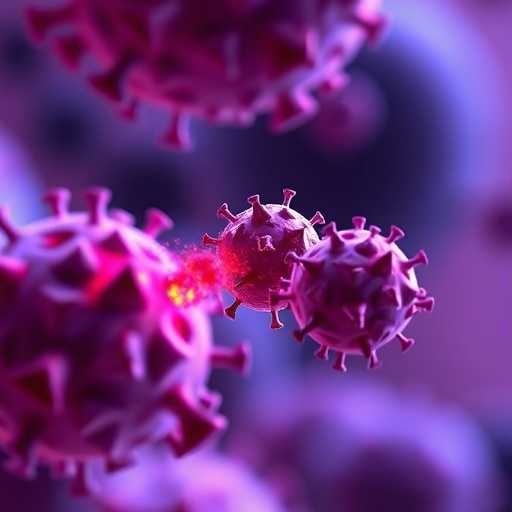DENVER, Colo. – Malignant neuroendocrine tumors, commonly called NETs, are easy to miss and associated with discouraging survival rates and poor quality of life. A study presented at the 2017 Annual Meeting of the Society of Nuclear Medicine and Molecular Imaging (SNMMI) shows how a novel peptide receptor radionuclide therapy (PRRT) is significantly improving patient wellbeing.
In the NETTER-1 Phase III Trial, a randomized prospective study, researchers focused on advanced midgut NETs and reviewed patient-reported quality of life questionnaires following treatment with lutetium-177 (177Lu)-octreotate PRRT, also known as 177Lu-DOTATATE–brand name Lutathera. Treatment with Lutathera provided some relief for neuroendocrine cancer patients in the study when compared to high-dose octreotide, used as a control.
"In nearly all quality of life domains, there were more cases of improvement and fewer cases of decline in quality of life with Lutathera compared to the control arm of the trial," said Jonathan Strosberg, MD, associate professor at the H. Lee Moffitt Cancer Center in Tampa, Florida.
Researchers compared quality-of-life feedback provided in patient questionnaires for two groups of patients: one received Lutathera treatment and the control group received a high-dose somatostatin analog therapy (60 mg of Octreotide LAR). Results showed that, on average, 28% of patients reported a significant improvement in the Global Health metric of their quality-of-life questionnaire after Lutathera. On average, only 15 percent of control-group patients reported an improvement of quality of life. An average of 39 percent of patients who took Lutathera also reported an improvement in diarrhea symptoms compared to 23 percent of controls.
"This analysis is very important as assessment of patient quality of life is increasingly viewed as highly relevant to cancer research," noted Strosberg. "Ideally, new drugs should not only prolong survival, but also maintain patient quality of life. What is relatively unique in this study is that quality of life not only appears to be maintained, but is actually improved in certain aspects with the investigational drug,"
About 8,000 new cases of neuroendocrine cancer are diagnosed annually in the United States, according to the American Cancer Society.
While Lutathera has not yet been approved by the Food and Drug Administration, it is under priority review and expanded access is available through participating institutions currently researching the drug.
###
Scientific Paper 244: "NETTER-1 Phase III Trial suggests Quality of Life Improvements in Patients with Midgut Neuroendocrine Tumors," J. Strosberg, Moffitt Cancer Center, Tampa, Fla.; E. Wolin, Markey Cancer Center, University of Kentucky, Lexington, Ky.; B. Chasen, University of Texas MD Anderson Cancer Center, Houston, Texas; M. Kulke, Dana-Farber Cancer Institute, Boston, Mass.; D. Bushnell, University of Iowa, Iowa City, Iowa; M. Caplin, Royal Free Hospital, London, United Kingdom; R. P. Baum, Zentralklinik, Bad Berka, Germany; P. Kunz, Stanford University Medical Center, Stanford, Calif.; T. Hobday, Mayo Clinic College of Medicine, Rochester, Minn., USA; A. Hendifar, Cedars Sinai Medical Center, Los Angeles, Calif.; K. Oberg, University Hospital, Uppsala University, Uppsala, Sweden; M. Lopera Sierra, Advanced Accelerator Applications, New York, N.Y.; D. Kwekkeboom, E. Krenning, Erasmus Medical Center, Rotterdam, The Netherlands; P. Ruszniewski, Hopital Beaujon, Clichy, France, SNMMI's 64th Annual Meeting, June 10-14, 2017, Denver, Colo.
LINK TO ABSTRACT
Please visit the SNMMI Media Center for more information about molecular imaging and personalized medicine. To schedule an interview with the researchers, please contact Laurie Callahan at (703) 652-6773 or [email protected]. Current and past issues of the Journal of Nuclear Medicine can be found online at http://jnm.snmjournals.org.
About the Society of Nuclear Medicine and Molecular Imaging
The Society of Nuclear Medicine and Molecular Imaging (SNMMI) is an international scientific and medical organization dedicated to raising public awareness about nuclear medicine and molecular imaging, a vital element of today's medical practice that adds an additional dimension to diagnosis, changing the way common and devastating diseases are understood and treated and helping provide patients with the best health care possible.
SNMMI's more than 17,000 members set the standard for molecular imaging and nuclear medicine practice by creating guidelines, sharing information through journals and meetings and leading advocacy on key issues that affect molecular imaging and therapy research and practice. For more information, visit http://www.snmmi.org.
Media Contact
Laurie Callahan
[email protected]
@SNM_MI
http://www.snm.org
http://www.snmmi.org/NewsPublications/NewsDetail.aspx?ItemNumber=24282
############
Story Source: Materials provided by Scienmag




